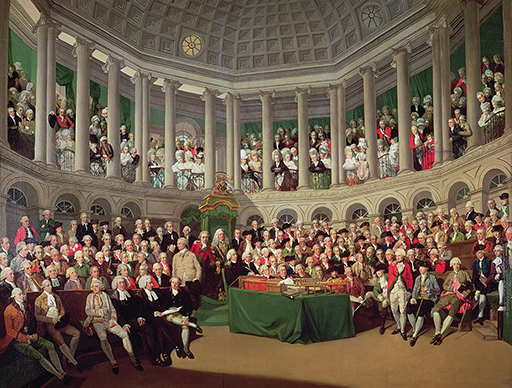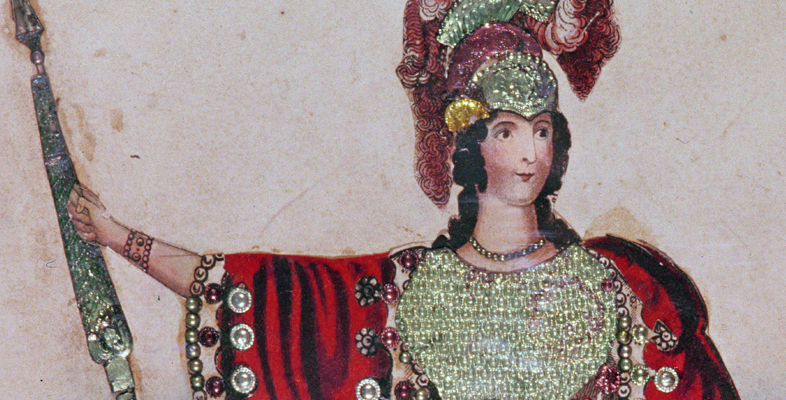1.1 Constitutional relations between Britain and Ireland up to 1782
From 1177 to 1541, the English monarch also held the title Lord of Ireland. In theory, this meant that the king of England ruled all of Ireland but, in practice, his authority was limited to certain areas. The Kingdom of Ireland was created in 1541 as part of wider efforts by Tudor authorities to gain firmer control of the country and introduce the Protestant Reformation (Smyth, 2001). While English authority was eventually extended over the entire island, the Reformation was limited in its impact. The Church of Ireland, the Protestant established church of the kingdom, was not supported by the bulk of the native population (the Gaelic Irish), or those of Anglo-Norman descent (a group sometimes described as the ‘Old English’). Whereas the latter group had traditionally been the ruling elite of the country, due to their failure to abandon Catholicism they were replaced in this capacity by new Protestant settlers from Britain.
By the beginning of the eighteenth century, the Parliament of the Kingdom of Ireland was a wholly Protestant assembly, very similar in terms of structure and procedure to that of Westminster. Three hundred elected representatives sat in the House of Commons in Dublin, while members of the aristocracy and Church of Ireland bishops sat in the House of Lords. For much of the century, the Irish Parliament can be regarded as subordinate to its Westminster counterpart. Poynings’ Law (1494), a law that had evolved significantly over the course of the seventeenth century, meant that draft bills originating in Ireland had to receive the approval of the Privy Council in London before they could be put to Irish MPs. Furthermore, a Declaratory Act of 1720 saw the British Parliament claim the right to legislate for Ireland.
Although Irish MPs played a significant role in drafting legislation, Poynings’ Law remained a grievance throughout the eighteenth century. Meanwhile, any British interference in Irish affairs, particularly efforts on the part of the Westminster assembly to legislate for Ireland directly, had the potential to stir up intense hostility from Ireland’s exclusively Protestant political elite. This hostility intensified in the later eighteenth century, inspired by the rhetoric of the American (1776–1783) and French Revolutions (1789–1794).

Figure 2 shows the chamber of the Irish House of Commons at College Green in Dublin, as depicted by Francis Wheatley (1747–1801). Standing in the foreground of the painting, to the bottom right, you can see the MP Henry Grattan (1746–1820), wearing a red coat. He is shown delivering a celebrated speech in April 1780 in which he called for the repeal of Poynings’ Law and the Declaratory Act on the basis that only the ‘King’s most excellent Majesty, and the Lords and Commons of Ireland’ had the power to make laws that bound Ireland (Madden, 1853, p. 51). He called on the authority of the Magna Carta and other freedoms guaranteed by the English constitution to support this claim.
Grattan had entered Parliament in 1775 and soon became leader of the ‘patriot’ interest, a group of opposition MPs in the Irish House of Commons. ‘Patriotism’, as it had developed in Ireland and elsewhere, was concerned with asserting the right of the people to be governed by their own elected representatives, to determine how taxes they paid were raised and spent, and to enjoy civil liberties. These rights and liberties were guaranteed by the ‘mixed’ English constitution, regarded by many contemporaries as the perfect balance between monarchical, aristocratic and democratic rule. The institutions of the monarchy, House of Lords and House of Commons represented each of these different forms of power within government.
From the point of view of Irish patriots, it was unconstitutional for British MPs to make laws for Ireland, or to restrict the authority exercised by the Irish Parliament, because they did not represent the interests of Irish people. In the 1780s, patriot MPs in the Irish Parliament gained considerable public support, most notably from the Volunteers, groups of local militia organised for home defence during the American Revolutionary War (1775–83). The red coat that Grattan is wearing in the painting in Figure 2 was a distinguishing feature of the Volunteer uniform. You can also make out other MPs and observers, both male and female, wearing the uniform or colours of the Volunteers in the public gallery, giving some indication of popular support for the movement (O’Dowd, 2006).
Grattan and his supporters were ultimately successful in securing legislative independence for the Irish Parliament when, in 1782, Poynings’ Law and the Declaratory Act were repealed.
